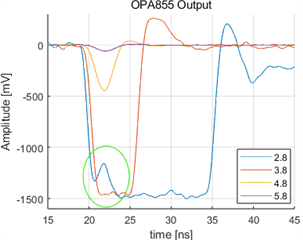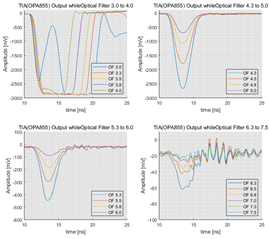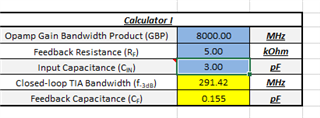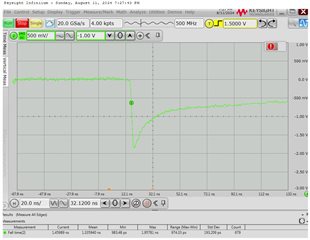Tool/software:
I use OPA855 with transimpedance amplfier with APD(Avalanceh PhotoDiode).
I want to set proper feedback resistor for wide input signal's dynamic range.
First, I set a feedback resistor to a few hundresd ohm (100 ~ 200 ohms).
When the input signal was saturated, it was first confirmed that the pulse width increased as expected.
However, after that, it was confirmed that the pulse was unexpectedly distorted.
(feedback resistor * current is larger than 5[V]) signal's rise edge is distorted. (green circle of below figure)
If input current be larger, distortion also be larger. The pulse does not maintain its trapezoidal shape.
 Legend: Magnitude of optical filter, '+1.0' means power of laser is attenuated by a factor of 10.
Legend: Magnitude of optical filter, '+1.0' means power of laser is attenuated by a factor of 10.
And then, I set a feedback resistor 5kohm.
However, in this time, although (feedback resistor * current) is almost 50[V] but a pulse doesn't distort. (It means pulse width increases, but it remains trapezoidal.)
So, I have a question about the realationship of input current and TIA's output.
Is a OPA855's output waveform affected to the input current?
I can't find a information about this in OPA855's datasheet.





